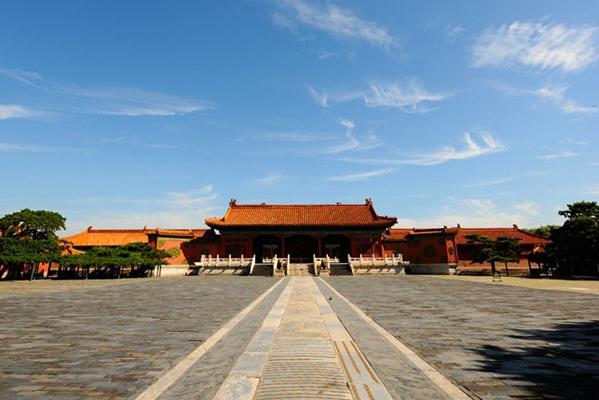
Start of Autumn (Chinese: 立秋), the 13th solar term of the year, began this year on Aug 7 and ended on Aug 22. It starts when the sun reaches the longitude of 135°. The Start of Autumn not only foretells the end of the scorching summer, but also indicates the fruitful season is approaching, a time when early rice is gathered and late rice is transplanted. It is the time that autumn crops come into their crucial growing stage. In ancient China, people emphasized a lot on the Start of Autumn since they regarded it as the significant point when summer turned into autumn.[Photo by Wang Jin/Palace Museum]
“Phenology of Forbidden City” is a well-received column on Palace Museum’s official microblog, which captures the transition of four seasons inside the museum.
As the traditional Chinese lunar calendar divides the year into 24 solar terms, it shows beautiful photos of flowers, trees, birds, and cats inside the museum according to each solar term.
“The photos enable people to see the transition of four seasons in a year, which makes it feel like the Palace Museum is alive,” the museum’s photographer Wang Jin told Beijing Daily.
According to Wang, the idea of uploading the column struck him after his photos on the first snow on Forbidden City on Feb 7 became a great hit on the museum’s official Weibo.
Thereafter, on each solar term, Wang would take some photos of animals and plants to reflect the change of seasons during the year.
“We can experience the beauty of the Forbidden City only with our souls. We should slow down our steps to observe carefully, rather than glance at things in a hurry, and then we can see a more beautiful Palace Museum,” Wang said.
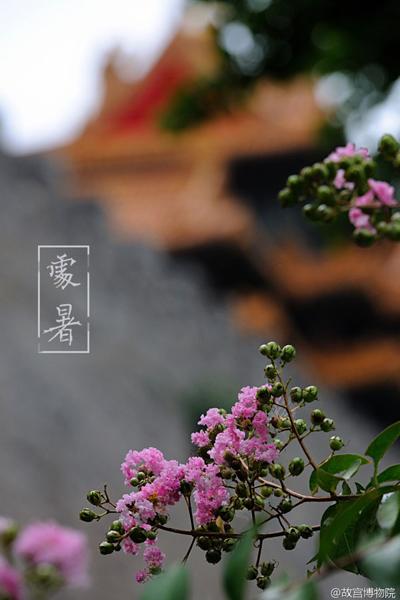
End of Heat (Chinese: 处暑), the 14th solar term of the year, began this year on Aug 23 and ended on Sept 7. It begins when the Sun reaches the celestial longitude of 150° and ends when it reaches the longitude of 165°. This solar term indicates that the hot summer is ending. However, in fact, it is not cool yet at the moment and could be still very hot in some days, especially in the afternoon of sunny days. This is also a busy season of harvesting for farmers. According to traditional Chinese medicine, this is a period where the weather changes from hot to cold, so people have to adjust the balance of yin and yang in the body. People are advised to wear suitable clothes and have enough sleep. For better health, nutritionists advise people to drink more water, light tea, juice, milk, or soybean milk, and eat fresh vegetables and fruits. Fried or spicy food should be avoided.[Photo by Wang Jin/Palace Museum]
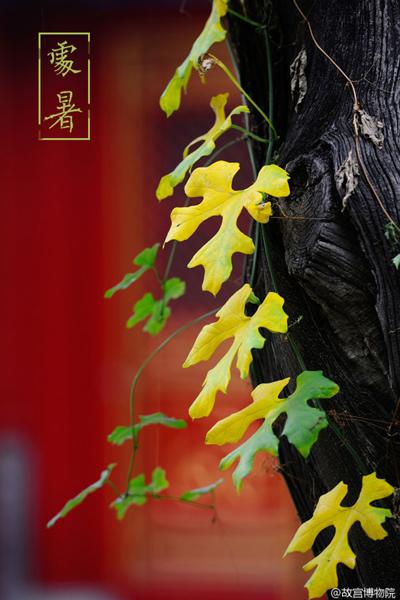
End of Heat (Chinese: 处暑), the 14th solar term of the year, began this year on Aug 23 and ended on Sept 7. It begins when the Sun reaches the celestial longitude of 150° and ends when it reaches the longitude of 165°. This solar term indicates that the hot summer is ending. However, in fact, it is not cool yet at the moment and could be still very hot in some days, especially in the afternoon of sunny days. This is also a busy season of harvesting for farmers. According to traditional Chinese medicine, this is a period where the weather changes from hot to cold, so people have to adjust the balance of yin and yang in the body. People are advised to wear suitable clothes and have enough sleep. For better health, nutritionists advise people to drink more water, light tea, juice, milk, or soybean milk, and eat fresh vegetables and fruits. Fried or spicy food should be avoided.[Photo by Wang Jin/Palace Museum]
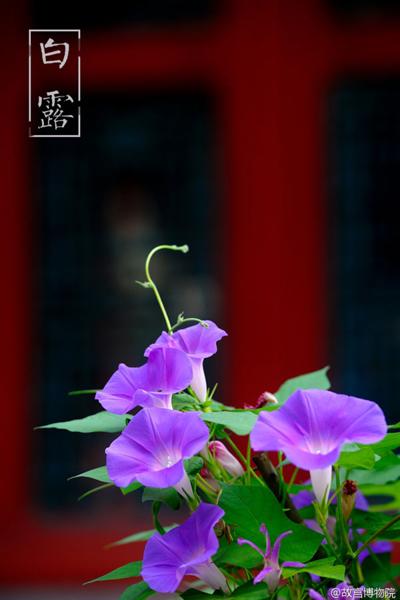
White Dew, (Chinese: 白露), the 15th solar term of the year, began this year on Sept 8 and ends on Sept 22. It begins when the Sun reaches the celestial longitude of 165°and ends when it reaches the longitude of 180°. The name of white dews means that the temperature is gradually getting lower and white dews can be seen on grass leaves and tree leaves. At this time, people will feel that the hot summer has been replaced by cool autumn, and there is a big temperature difference between day and night. During the white dews period, diseases such as nasal disease, asthma and bronchopathy should be prevented carefully, and it’s better to keep a balanced and light diet which is rich in vitamins.[Photo by Wang Jin/Palace Museum]
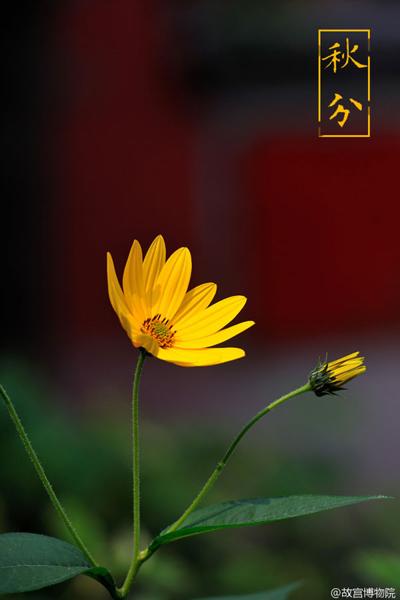
Autumn Equinox (Chinese: 秋分), the 16th solar term of the year, began this year on Sept 23 and ended on Oct 7. It arrives on when the sun reaches the celestial longitude of 180°. After Autumn Equinox, the temperature decreases obviously, and the differences between the temperature in the morning and in the night are also increasing, to more than 10 degree Celsius. The amount of rainfall decreases and it’s getting drier and drier in the air. [Photo by Wang Jin/Palace Museum]

Cold Dew (Chinese: 寒露) is the 17th of the solar terms of the lunar calendar which fell on Oct 8 and ended on Oct 22 this year. It begins when the Sun reaches the celestial longitude of 195° and ends when it reaches the longitude of 210°. The turn of seasons is obviously felt all over the country after the day of Cold Dew, as the coolness in the early autumn will turn into the coldness in deep autumn. Starting from the day of Cold Dew, it rains less, and the weather is dry with comparatively hot day and cool night. It is the time to get respiratory and digestive diseases easily, as well as cold and fever caused by the turn of seasons.[Photo by Wang Jin/Palace Museum]
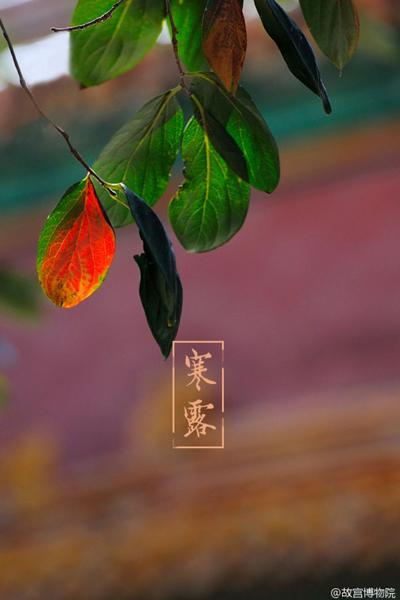
Cold Dew (Chinese: 寒露) is the 17th of the solar terms of the lunar calendar which fell on Oct 8 and ended on Oct 22 this year. It begins when the Sun reaches the celestial longitude of 195° and ends when it reaches the longitude of 210°. The turn of seasons is obviously felt all over the country after the day of Cold Dew, as the coolness in the early autumn will turn into the coldness in deep autumn. Starting from the day of Cold Dew, it rains less, and the weather is dry with comparatively hot day and cool night. It is the time to get respiratory and digestive diseases easily, as well as cold and fever caused by the turn of seasons. [Photo by Wang Jin/Palace Museum]

Frost’s Descent (Chinese: 霜降), the 18th solar term of the year, began this year on Oct 23 and ended on Nov 6. It begins when the Sun reaches the celestial longitude of 210°and ends when it reaches the longitude of 225°. Frost’s Descent is the last solar term in autumn, and it is also the transition period from autumn to winter. After this day, the activity of cold air is frequent and it is deep autumn already.[Photo by Wang Jin/Palace Museum]
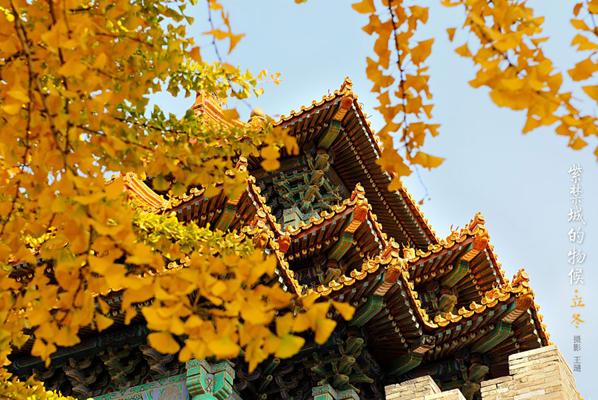
Start of Winter (Chinese: 立冬), the 19th solar term of the year, began this year on Nov 7 and ended on Nov 21. It begins when the Sun reaches the celestial longitude of 225° and ends when it reaches the longitude of 240°. The Start of Winter marks the beginning of winter. By then, farmers have harvested the grains and have stored them in the house, and some animals have begun to hibernate.[Photo by Wang Jin/Palace Museum]

Start of Winter (Chinese: 立冬), the 19th solar term of the year, began this year on Nov 7 and ended on Nov 21. It begins when the Sun reaches the celestial longitude of 225° and ends when it reaches the longitude of 240°. The Start of Winter marks the beginning of winter. By then, farmers have harvested the grains and have stored them in the house, and some animals have begun to hibernate.[Photo by Wang Jin/Palace Museum]
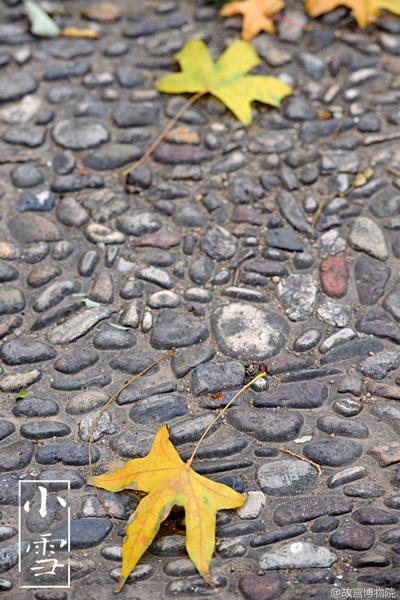
Minor Snow (Chinese: 小雪), the 20th solar term of the year, began this year on Nov 22 and ended on Dec 6. It begins when the Sun reaches the celestial longitude of 240°and ends when it reaches the longitude of 255°. During this solar term, the weather is chilly and cloudy, which will influence people’s mood, especially those suffering from depression. Because this solar term has less sunshine, and people must make extra efforts to keep healthy. [Photo by Wang Jin/Palace Museum]
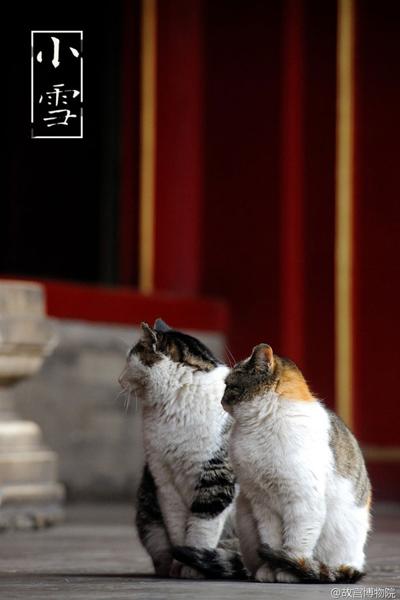
Minor Snow (Chinese: 小雪), the 20th solar term of the year, began this year on Nov 22 and ended on Dec 6. It begins when the Sun reaches the celestial longitude of 240°and ends when it reaches the longitude of 255°. During this solar term, the weather is chilly and cloudy, which will influence people’s mood, especially those suffering from depression. Because this solar term has less sunshine, and people must make extra efforts to keep healthy. [Photo by Wang Jin/Palace Museum]
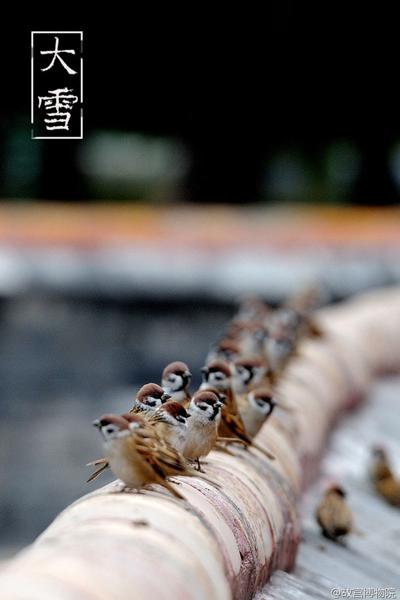
Major Snow (Chinese: 大雪), the 21st solar term of the year, began this year on Dec 7 and ended on Dec 21. It begins when the Sun reaches the celestial longitude of 255°and ends when it reaches the longitude of 270°. This solar term means that the snow becomes heavy. During this period, the snow begins to accumulate on the ground. In the northern area of China, the natural scenery is “ice blockading for hundreds miles and snow flying through thousands miles”, and in the south, the snowflakes fly and the world turns white. During Major Snow, the snow in the north may last a whole day, breaking the branches and blocking the road. [Photo by Wang Jin/Palace Museum]
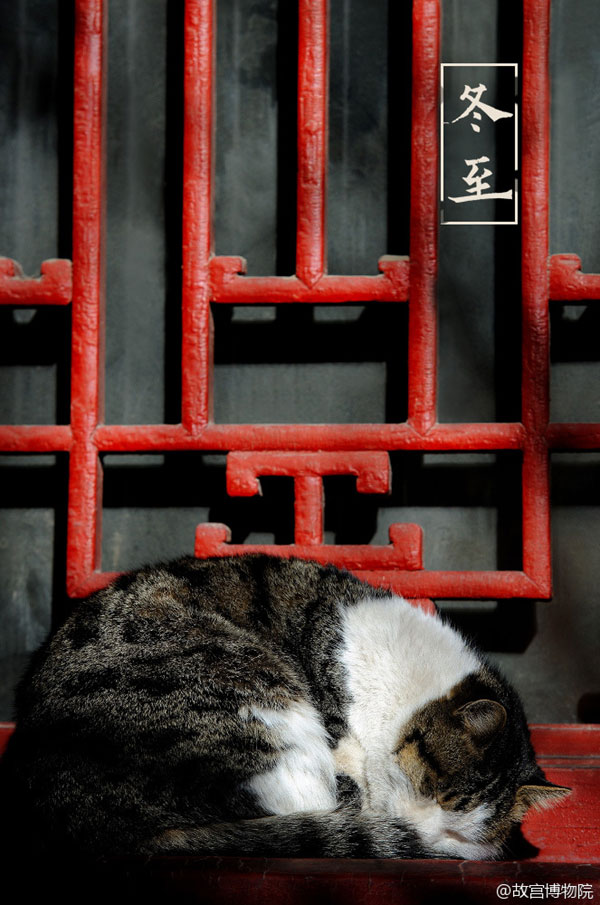
Winter Solstice (Chinese: 冬至), the 22nd solar term of the year, began this year on Dec 22 and ended on Jan 6. It begins when the Sun reaches the celestial longitude of 270° and ends when it reaches the longitude of 285°. Winter Solstice Day is considered as one major and important Chinese festival in the lunar calendar which is still celebrated and valued today. By celebrating this traditional festival, the Chinese would reunion and have dumplings made by them. In ancient times, the emperor would hold a solemn heaven worship ceremony and common people would offer sacrifice to their late parents and ancestors.[Photo by Wang Jin/Palace Museum]
